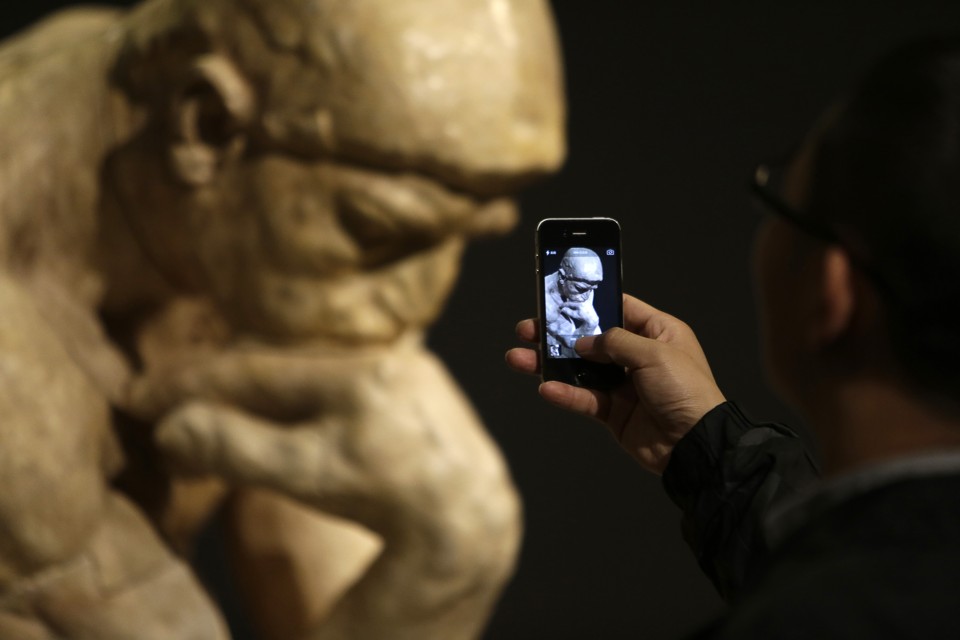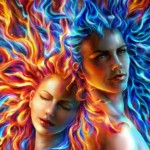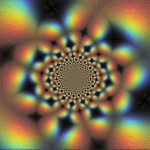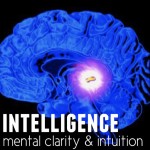
When Isaac Newton was 17 years old, he performed a series of experiments with prisms and light beams. Within weeks he discovered the scientific explanation for color, invented the reflecting telescope, proposed the particle theory of light, and deduced that the human eye contained three receptor types corresponding to the three primary colors. Not bad for a teen.
Newton’s insights were not easily accepted. At the time, the prevailing theory of color was metaphysical. White light was thought to be pure, heavenly, and scrubbed of all contaminants, whereas colored light was contaminated by the worldly surfaces it touched. To scholars, the exact process by which white light became dirtied was a philosophical hard problem worthy of debate.
We now know why that hard problem was so darn hard. The brain processes the world in a simplified and inaccurate manner, and those inaccuracies gave people the wrong idea about color. Deep in the visual system, the brain reconstructs information about light. In that simplified code, white corresponds to the color channels registering zero and the brightness channel cranked up high. Pure luminance without color is a physical impossibility, because white light is a mixture of all colors. The pre-Newtonian problem of color was hard because it had no possible solution.
Let me be as clear as possible: Consciousness doesn’t happen. It’s a mistaken construct.
Why would the brain evolve such an inaccurate, simplified model of the world? The reason is efficiency. The brain didn’t evolve to get all the scientific details right. That would be a waste of energy and computing time. Instead, it evolved to process information about the world just well enough, and quickly enough, to guide behavior. All the brain’s internal models are simplified caricatures of the world it models. Arguably, science is the gradual process by which the cognitive parts of our brains discover the profound inaccuracies in our deeper, evolutionarily built-in models of the world.
The hard problem of our own time is the mystery of consciousness. Let me be precise about what I mean by consciousness. These days it’s not hard to understand how the brain can process information about the world, how it can store and recall memories, how it can construct self knowledge including even very complex self knowledge about one’s personhood and mortality. That’s the content of consciousness, and it’s no longer a fundamental mystery. It’s information, and we know how to build computers that process information. What’s mysterious is how we get to be conscious of all that content. How do we get the inner feeling? And what is that inner feeling anyway?
It’s been called awareness, phenomenology, qualia, experience. It seems non-physical, ethereal, more like an energy than a substance, by definition private and therefore not objectively testable. And the fact that it seems like anything at all is the thing itself—the seeming.
At first sight, we have what appears to be an unsolvable hard problem. If the brain generates consciousness, how does it do it? What exactly is being generated? Energy? Matter? A third, more fundamental substance? Some scientists have suggested it’s generated by vibrations in the brain, perhaps oscillating activity in neurons, or perhaps quantum states of microscopic tubules inside the neurons. Or it could be independent of the brain altogether, as many mystics claim. One guess is that everything in the universe is imbued with a primordial consciousness. Maybe it’s a special life force, like in Star Wars, which has so far escaped scientific detection. Or maybe a deity breathed it into us and when we die it leaves the body and enters a new phase of existence.
The mythos of consciousness is every bit as confusing and nonsensical as the purity of white light, and the source of the confusion is the same. The brain constructs inaccurate models of the world. To understand consciousness scientifically, once again it’s necessary for the cognitive parts of our brains to discover the inaccuracies in our deeper, built-in models of ourselves.
The human brain insists it has consciousness, with all the phenomenological mystery, because it constructs information to that effect. The brain is captive to the information it contains. It knows nothing else. This is why a delusional person can say with such confidence, “I’m a kangaroo rat. I know it’s true because, well, it’s true.” The consciousness we describe is non-physical, confusing, irreducible, and unexplainable, because that packet of information in the brain is incoherent. It’s a quick sketch.
What’s it a sketch of? The brain processes information. It focuses its processing resources on this or that chunk of data. That’s the complex, mechanistic act of a massive computer. The brain also describes this act to itself. That description, shaped by millions of years of evolution, weird and quirky and stripped of details, depicts a “me” and a state of subjective consciousness.
This is why we can’t explain how the brain produces consciousness. It’s like explaining how white light gets purified of all colors. The answer is, it doesn’t. Let me be as clear as possible: Consciousness doesn’t happen. It’s a mistaken construct. The computer concludes that it has qualia because that serves as a useful, if simplified, self-model. What we can do as scientists is to explain how the brain constructs information, how it models the world in quirky ways, how it models itself, and how it uses those models to good advantage.
The study of consciousness needs to be lifted out of the mysticism that has dominated it. Consciousness is not just a matter of philosophy, opinion, or religion. It’s a matter of hard science. It’s a matter of understanding the brain and the mind—a trillion-stranded sculpture made out of information. It’s also a matter of engineering. If we can understand the functionality of the brain, then we can build the same functionality into our computers. Artificial consciousness may just be a hard problem within our grasp.
MICHAEL GRAZIANO
http://www.theatlantic.com/








